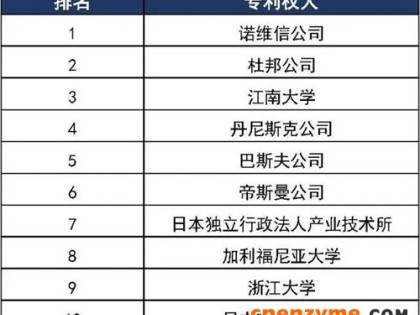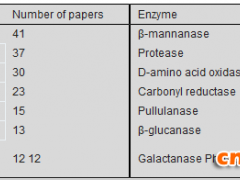Position Statement and FAQ
ENZYME USE IN FRUIT JUICE PROCESSING
Commercial sources of fungal pectic enzymes have been used in fruit juice processing since the 1930's for clarifying fruit juices and disintegrating plant pulps to increase juice yields.1 Commercial enzymes are similar to the naturally occurring pectinases, cellulases, and hemicellulases found in fruit during ripening. Most enzymes are marketed on the basis that they are generally recognized as safe (GRAS) for their intended use in the juice process.2 GRAS affirmation can be based on common use in foods prior to 1958, or on publicly available studies that establish the safety of the enzymes. To obtain official FDA recognition, a GRAS Affirmation Petition was filed with the US Food and Drug Administration by the Ad Hoc Enzyme Technical Association, a forerunner of the Enzyme Technical Association (ETA), seeking GRAS affirmation of many enzymes based on common use in foods, including pectinases from Aspergillus niger and Aspergillus oryzae. This petition, GRASP 3G0016, provided supporting documentation in the form of published and unpublished studies attesting to the safety of enzyme use as an adjunct to the physical separation of juice from the fruit. In addition, data were provided that demonstrated the functional effects in the fruit matrix. The agency accepted this petition for filing on April 23, 1973. The agency does not have any concerns regarding enzyme safety. Enzymes are used in the juice industry to aid in the separation of juice from the fruit cells and to clarify the juice by the removal of pectin and naturally occurring starches that contribute to undesired viscosity, poor filtration, and a cloudy appearance.
APPLE JUICE
Apple juice produced with enzymes typically follows one of two primary methods of extraction; traditional pressing or decanter extraction.3
Traditional Pressing
In the traditional pressing operation, whole apples are milled and treated with enzymes prior to pressing to loosen cell walls and promote free run juice. In a number of pressing operations, pressing aids such as rice hulls are mixed with the apple mash prior to pressing. After pressing, the juice is transferred to clarification tanks where additional enzyme is added to the juice to depectinize and hydrolyze starch prior to filtration. Enzymes are inactivated during pasteurization of the juice.
Decanter Extraction
Using decanter extraction, apples are milled, and may or may not be heated to temperatures exceeding 140?F prior to being passed through a finisher to remove seeds, skins, and stems before enzyme addition. Enzymes are added to the resulting mash to loosen cell walls and reduce viscosity prior to centrifugation. In this type of extraction, pectinase preparations, and sometimes cellulase and hemicellulase preparations, are used to further reduce viscosity. Because the mash is heated and stirred in the presence of enzyme prior to centrifugation, some additional juice is recovered that may not be extracted during traditional pressing operation. In some cases, juice extracted by decanter technology has been found to contain trace amounts of cellobiose, a breakdown product of cellulose. The presence of cellobiose has been attributed to the use of enzymes; however, cellobiose has also been found in commercial apple sauce where no enzymes have been employed.4
The decanter extraction process is sometimes described as liquefaction, or incorrectly as whole apple or whole fruit liquefaction. The latter terms are misnomers in that the whole fruit is not completely liquefied. The use of enzymes for the purpose of assisting with the physical separation does not result in the total liquefaction of the whole fruit nor even of the treated mash. In fact approximately 25% of the mash is discarded as waste after juice extraction is completed. The ETA is not aware of, nor has it ever endorsed any applications where whole fruit is being liquefied with the aid of enzymes to produce juice or for other food applications.
1 MacMillan, J.D. and Sheiman, M.I., Pectic Enzymes, In: Food Related Enzymes, J.R. Whitaker, Ed. Adv. In Chemistry Series, Amer. Chem. Soc., Washington, D.C., pp. 101-130, (1974).
2 The Generally Recognized as Safe (GRAS) status of the specific enzymes used in fruit juice processing has been self-affirmed by individual enzyme manufacturers.
3 Fruit Juice Processing Technology, Nagy, S., Chen, C.S., Shaw, P.E., eds., AGSCIENCE, Inc., 1993.
4 ETA Member Communication.
Enzyme Technical Association
Questions and Answers
Enzyme Use in Fruit Juice Processing
Question: What is: "Whole fruit liquefaction"? "Total liquefaction"?
Answer:"Total" or "Whole fruit" liquefaction refers to a process in which the entire fruit is subjected to enzymatic treatment. As a practical matter, liquefying the entire fruit is not possible because of the skin, seeds, stems. In practice, the use of the term "total liquefaction" describes the action of enzymes on fruit pulp after (in the case of apples), seeds, skin, and stems are removed.
Question: What are oligosaccharides?
Answer: Oligosaccharides are complex carbohydrates, common to many foods, which yield two to ten monosaccharides on hydrolysis.
Question: What is galactose? Is it harmful?
Answer: Galactose is a monosaccharide with physical properties resembling glucose, but somewhat less sweet. Galactose, or carbohydrates that yield galactose when exposed to digestive enzymes occur in many fruits, including apples. One of the most prevalent sources of galactose in the diet is from dairy products. The galactose results from the action of lactase on milk sugar or lactose. Lactose is split by lactase into glucose and galactose. Galactose is a common metabolic by-product from normal digestion and is not harmful to individuals with normal functioning metabolic pathways.
Question: What is galactosemia?
Answer: Galactosemia is a hereditary disorder of carbohydrate metabolism which manifests itself in early infancy. The incidence of galactosemia in live born infants is approximately 1 in 57,0001. It causes vomiting, diarrhea, jaundice, poor weight gain, and malnutrition in early infancy.
Question: What is cellobiose?
Answer: Cellobiose is a carbohydrate, composed of two d-glucose molecules. It is the result of the partial hydrolysis of cellulose, such as the cellulose which is a normal constituent of apple pulp. Cellobiose has also been found in fruits, not subjected to enzyme treatment, including applesauce, cranberries, and cranberry juice.
1 Metabolic and Molecular Basis of Inherited Disorders, 7th ed., McGraw Hill. 1995.





